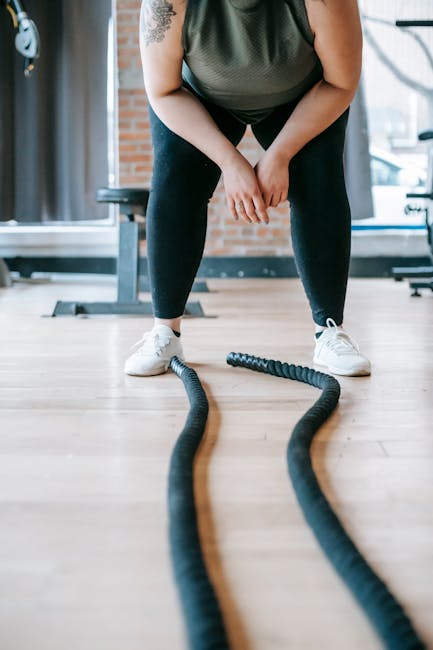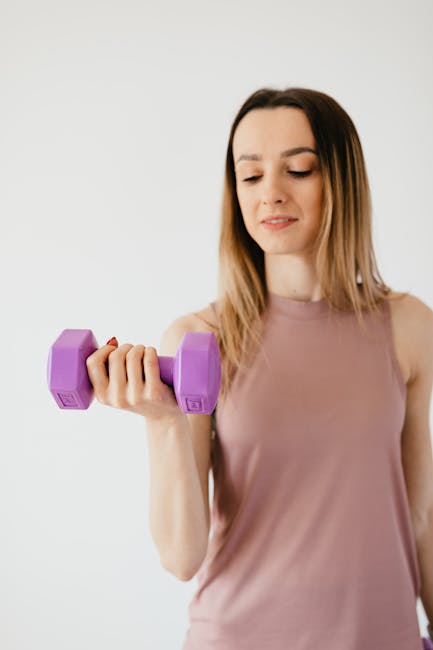Are you tired of feeling like you have the grip strength of a newborn baby when it comes to weightlifting? Do you find yourself struggling with heavy weights slipping out of your sweaty palms like a bar of soap in the shower? Fear not, dear reader, for the solution to your lifting woes comes in the form of a handy dandy accessory known as weight lifting straps. Not only will these straps provide you with a grip of steel, but they’ll also make you look like a serious player in the weight room. So put down that lotion bottle and pick up those straps, because we’re about to embark on a journey to the land of better grip and less dropping.
Contents
Introduction to Weight Lifting Straps
Are you tired of your grip failing you mid-lift? Do you find yourself dropping weights like a hot potato? Fear not, my friend, weight lifting straps are here to save the day! These sturdy straps provide an extra layer of grip, allowing you to lift heavy without worrying about your hands slipping. In this post, we’ll explore what weight lifting straps are, how they work, and why you should add them to your gym bag ASAP!
Weight lifting straps are essentially long strips of fabric that wrap around your wrist and the barbell or dumbbell you’re lifting. They work by creating a secure attachment between your hand and the weight, eliminating the need to rely solely on your grip strength. This means you’ll be able to lift heavier weights and push yourself further without having to worry about losing control.
Some lifters shy away from using weight lifting straps, fearing they’ll become too reliant on them and neglect their grip strength. However, this couldn’t be further from the truth! In fact, incorporating straps into your lifting routine can actually help you build stronger grip overall. By allowing you to lift more weight, you’ll be putting your forearms and hand muscles under greater pressure, which can lead to greater gains in grip strength over time.
So there you have it, folks – weight lifting straps may not be the most glamorous piece of gym equipment, but they can definitely make all the difference in your lifting game. Take some time to experiment with different types and styles of straps to see what works best for you, and don’t be afraid to incorporate them into your routine on days when you’re really looking to push yourself to the limit. Happy lifting!
When to Consider Using Weight Lifting Straps
Let’s face it, sometimes our hands just can’t keep up with our muscles. That’s where weight lifting straps come in handy. Here are a few instances when you should consider using them:
- When you find yourself struggling to hold onto the weight, like a slippery fish trying to escape your grasp.
- When you’re doing high reps and your grip strength is starting to weaken faster than your will to live.
- When you want to take your pull-ups to the next level without sacrificing your delicate hands to the gods of callouses.
Using weight lifting straps can be a controversial topic, but if it means less grip fatigue and more gains, who cares what the haters say?
So go ahead, embrace the straps and lift with confidence. Just don’t forget to thank them when you’re crushing your PRs.
Types of Weight Lifting Straps Available
So you’ve finally decided to take the plunge and start lifting heavy weights. Congratulations! Now that you’ve hit the gym, you may have noticed that people are using some equipment that you’ve never seen before. Yes, we’re talking about weightlifting straps. If you’re confused about which type of strap to use, don’t worry – we’ve got you covered.
First up are the classic wrist straps. These are perfect for giving you much-needed support when you’re lifting heavier weights. The great thing about wrist straps is that they’re fairly adaptable and can be used for a variety of exercises, from deadlifts to rows. Just wrap them around your wrists a few times and you’re good to go! They come in a variety of materials, including leather and nylon, so choose the one that works best for you.
Next, there are the figure-eight straps. These are called “figure-eight” because they look like the number eight when you wrap them around your wrists. They’re specifically designed for deadlifts, but they can also be used for other exercises like rows and shrugs. The great thing about these straps is they offer extra support, so you can lift more weight than you would be able to without them. Also, they make you look like a total pro in the gym.
Last but not least are the lifting hooks. These are pretty much what they sound like – hooks that attach to your wrists and allow you to hold onto the bar without gripping it. These hooks are great for people who struggle with grip strength, allowing them to lift heavier weights without worrying about their grip giving out. The only downside is that they can be a bit awkward to use at first, but once you get the hang of it, you’ll be pulling bigger weights in no time!
How to Properly Use Weight Lifting Straps
So, you’ve decided to use weight lifting straps, huh? Well, strap in and get ready for some tips on how to use them properly.
First things first: make sure the strap is wrapped around the bar correctly. We don’t want any bar slips mid-deadlift, do we? The best way to do this is to make a loop at one end of the strap and slip it over the bar. Then, put your hand through the loop and wrap the rest of the strap around the bar. Finally, pull the strap tight and wrap the excess around your wrist. Voila! You are now securely strapped in and ready to lift.
Secondly: don’t make the rookie mistake of relying purely on the straps. Yes, they will help you to maintain your grip, but they won’t magically give you superhuman strength. You still need to focus on building up your grip strength in the long-term – don’t be a strap crutch user.
And finally: be sure to choose the right straps for your needs. Are you looking for something with more padding and support, or are you after thin and lightweight straps for ease of use? Do some research and save yourself from any potential strap frustration down the line.
Tips for Maintaining Weight Lifting Straps
Struggling with maintaining your weight lifting straps? Fear not, for we have got you covered with some tireless tips to keep your straps in tip-top shape. After all, who wants to go through the painful process of breaking in a new pair of straps over and over again? Not me, for sure!
First and foremost, always make sure to clean your straps after each gym session. Sweat and dirt can accumulate, resulting in unwanted bacteria growth and unpleasant odors. Simply rinse them with lukewarm water and mild soap, and air dry them. Refrain from putting them in the dryer, unless you want to end up with toddler-sized straps.
Another crucial aspect of maintaining your weight lifting straps is by properly storing them. Keeping them haphazardly in your gym bag or throwing them on the floor of your car is a recipe for disaster. Hang them somewhere dry and clean, using hooks or hangers, to ensure they do not develop any unwanted kinks or creases.
Last but not least, treating your straps to a conditioning session every once in a while can do wonders for their longevity. Grab a small spray bottle and fill it with water and a teaspoon of fabric softener. Spray this mixture onto your straps, and gently rub it in with a soft cloth. Not only will your straps smell fresh and clean, but they will also be supple, making lifting sessions a breeze.
So, Strap It Up and Lift Heavy!
Congratulations, you’ve made it to the end of our weight lifting strap guide! You must be pretty pumped up to lift those weights like a boss. Don’t worry, we won’t judge you if you start shouting “I am the strongest!” in the gym – that’s what we do too.
So, go ahead and start using those straps to complement your workout routine. Lift the heavy weights like there is no tomorrow. Who needs a personal trainer when you’ve got your lifting straps to support you (okay, maybe don’t tell them we said that)?
Remember, always stay safe and don’t overdo it. You don’t want to end up becoming the gym’s next meme sensation. Until then, keep lifting, stay fit and let those straps do the talking!








Leave A Comment